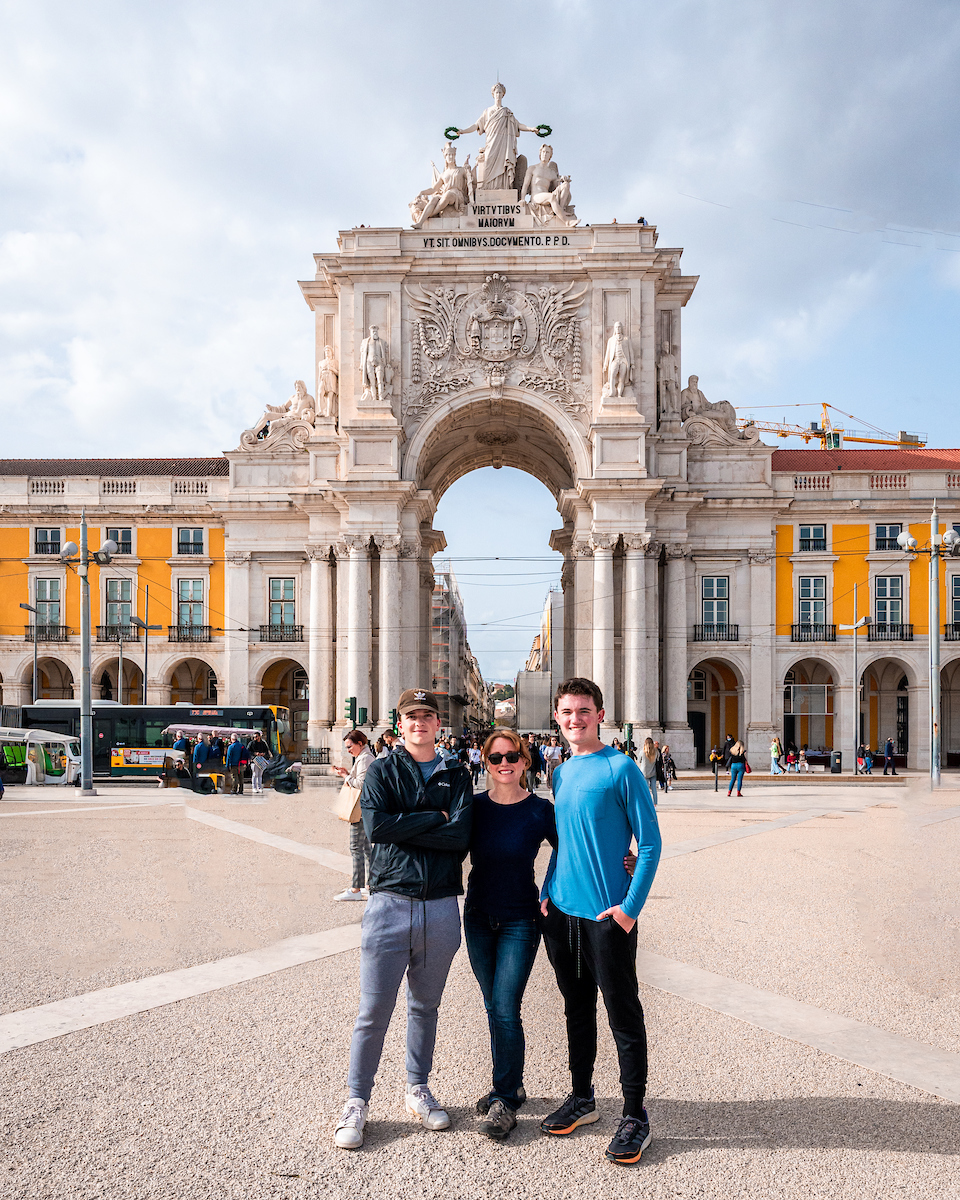Summary: Our last day in Portugal included a visit to Castle Saint George, a walking tour with Sandemans free walking tours, and then dinner out in our Baixa neighborhood. Our only regret is not staying at least one extra day in this beautiful City. Little did we know that there was so much more to see. If you can, be sure to stay at least three full days in this lovely City.
History of Castle Saint George. Our day started with a walk up to Castle Saint George. Inhabitation of the hill top that now houses Castle Saint George, dates back to 8th century BC. The first fortification, though, did not occur until 48 BC when Lisbon was a Roman city. Following the Moors rule, the castle served as a fortified residence of Afonso III, governor of the City. Later, it was converted to the Royal Palace for King Ferdinand I between 1373 and 1375. It was during this late 14th century period that King John I dedicated the castle to Saint George. After the construction of the Ribeira Palace near the Tagus river, the Castle fell out of favor, being damaged by neglect, decay, and fire. Following the Restoration War that freed Portugal from Spanish rule, the Portuguese government continued an effort started by the Spanish to restore the grounds. By 1755 though, much of the castle was severely damaged by the Lisbon earthquake and left in ruins. In the 1930s, Antonio de Oliveira Salazar undertook a restoration of the Castle grounds, in addition to other similar projects such as the restoration of Sintra. Today, the Castle sits in a special protection zone, intended on preserving the Castle, the walls of Lisbon, and other cultural heritage locations within the City of Lisbon. At night, as shown below, the castle lights up the skyline.
Visiting the Castle. Entrance to the castle was made easier with purchasing tickets online (10 euros for adults, 5 euros for young persons up to 25 years old). From here we entered the castle and immediately took to the view of Lisbon below. The castle grounds are very simple, with only one small exhibition inside an interior building. Even so, this Castle dominates the Lisbon skyline and seeing it up close was fun. The Castle grounds are also the home of peacocks who roam freely among the guests.
Walking Tour. Next we walked to the Praça Luís de Camões where our Sandemans Free Walking Tour started. We have done several of these free walking tours in other major European cities. This one, like the others, was led by an extremely knowledgeable tour guide/historian. These guides earn money on tips so please remember to tip generously at the end of the tour. Note that at the start of the tour, your guide will always be holding a red umbrella (pictured below).
This 3-hour tour starts at Camões Monument in Largo de Camões and ends at Praça do Comércio. One particularly memorable stop was a stop at the memorial of the 1506 Easter Slaughter, which sits just outside the Church of St. Dominic (Igreja de São Domingos). Between 1000 and 4000 Jews, men, women, and children alike, were slaughtered by a crowd of Catholics and visiting sailors anchored in the Tagus River. The incident occurred 30 years before the Portuguese Inquisition and nine years after Jews were already forced to convert to Catholicism. The victims, though already converted, were targeted nonetheless, having been the scapegoat of the then plague, drought, and hunger problems of the City. Following the massacre, some of those involved were punished severely by Manual I, including death sentences and confiscation of property.
Much of the tour was simply walking the lovely streets of Lisbon and listening to the history of the City. Our guide told us of the Age of Discovery, Portugal's devastating 1755 earthquake, the dictatorship of António de Oliveira Salazar, and the peaceful Carnation Revolution, among other historical facts.
Santa Justa Lift. The tour also stops at the top of the Santa Justa Lift. This elevator connects the Baixa neighborhood with Carmo Square. Developed to help with movement between these two neighborhoods that are otherwise separated by one of Lisbon's many steep hills, the Santa Justa Lift was completed in 1899 and designed by Portuguese-born French architect, Raoul de Mesnier du Ponsard, an apprentice of Gustave Eiffel (who designed the Eiffel Tower in Paris).
Praça do Comércio. The walking tour ends at Commercial Square in the central district of Baixa. Situated along side of the Tagus River, this large square was first used in the early 16th Century as a commerce center where government officials regulated commerce that entered through this port City. In the center of the square sits a statute of King Jose I who helped rebuild the square (and the City itself), following Lisbon's massive 1755 earthquake.
Last Dinner in Lisbon. Following the walking tour, we headed back to our Baixa Air BnB to relax before going out to dinner for our last night in Lisbon. If you love seafood, then try this traditional Portuguese dish consisting of fried fish, potatoes, and salad (photo below).
Reflecting back on this trip, we would say that Portugal would be a great first trip to Europe, especially for those on a budget. The cost, as compared to other European cities, is affordable. The people are much friendlier to tourists than other European countries as well. Lisbon has all the hallmarks of a quintessential European City, with beautiful architecture, rich history, and great food. The only thing missing is a good train system outside of Lisbon. Short of that, we cannot see why someone - especially those on a budget - wouldn't consider visiting Portugal as their first-ever European destination.



















































Comments